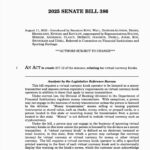El Salvador Revamps Bitcoin Storage Strategy
El Salvador has reformed its approach to storing the nation’s bitcoin, claiming that the adjustment not only enhances current security but also prepares for future technological risks that may arise.
In a statement made on Friday, the Bitcoin Office announced that the country’s entire reserve has been removed from a single wallet and distributed among several new ones. Each wallet will contain no more than 500 BTC, a limit aimed at minimizing potential damage in case one of them were to be compromised.
Officials characterized the new arrangement as adhering to established industry standards while also considering advancements in quantum computing. They pointed out that quantum machines could eventually undermine the cryptographic algorithms protecting bitcoin, along with everyday systems like banking, email, and online communications.
The issue comes into play when coins are used. To transfer bitcoin, the digital signature safeguarding those funds must be disclosed on the blockchain. At present, this is secure; however, a future quantum computer could theoretically exploit the revealed information to deduce the private key and steal the coins before the transaction is confirmed.
By moving coins into numerous unused wallets, El Salvador lessens the risk of its reserve being left with too many exposed keys simultaneously. Most of its assets remain secured behind information that is not currently vulnerable, and limiting the size of each wallet means that even a breach wouldn’t endanger the entire reserve.
The government also acknowledged that its previous setup — maintaining everything in a single address for transparency — resulted in unnecessary exposure. This address was used repeatedly, making its keys visible on the blockchain almost continuously. With the new model, a public dashboard permits anyone to monitor the reserve across multiple wallets, ensuring accountability without the need to reuse the same address consistently.
Simply put, the transition resembles moving funds from one large vault into a series of smaller safes. The locks on these safes remain concealed until they are opened, and no single safe contains excessive amounts of cash.
Beyond the quantum aspect, this also adheres to basic bitcoin management protocols. Seasoned users often caution against the repeated use of the same wallet, as it compromises both privacy and security. They also advise dividing large balances into smaller amounts, which reduces the impact if something goes awry.
This is why Adam Back, one of bitcoin’s original pioneers and the CEO of Blockstream, commended the change. Posting on X, he remarked that it’s “generally a good practice” to split funds into multiple components — referred to as UTXOs in bitcoin terminology — rather than consolidating them into one location and repeatedly using the same address.
Back, who developed the proof-of-work system Hashcash that influenced bitcoin and was referenced by Satoshi Nakamoto, didn’t directly address the quantum argument. Rather, his remarks highlighted that El Salvador’s new strategy embodies principles that have long been recognized as best practices in the bitcoin community.
Most researchers believe that quantum computers capable of posing a threat to bitcoin are still a decade or more away, and the network could eventually implement new safeguards if necessary. However, El Salvador is not postponing action.
By merging transparency with a more robust storage approach, the country has established itself as a case study for managing sovereign bitcoin reserves in the future — laying down a possible blueprint for others to emulate.



















